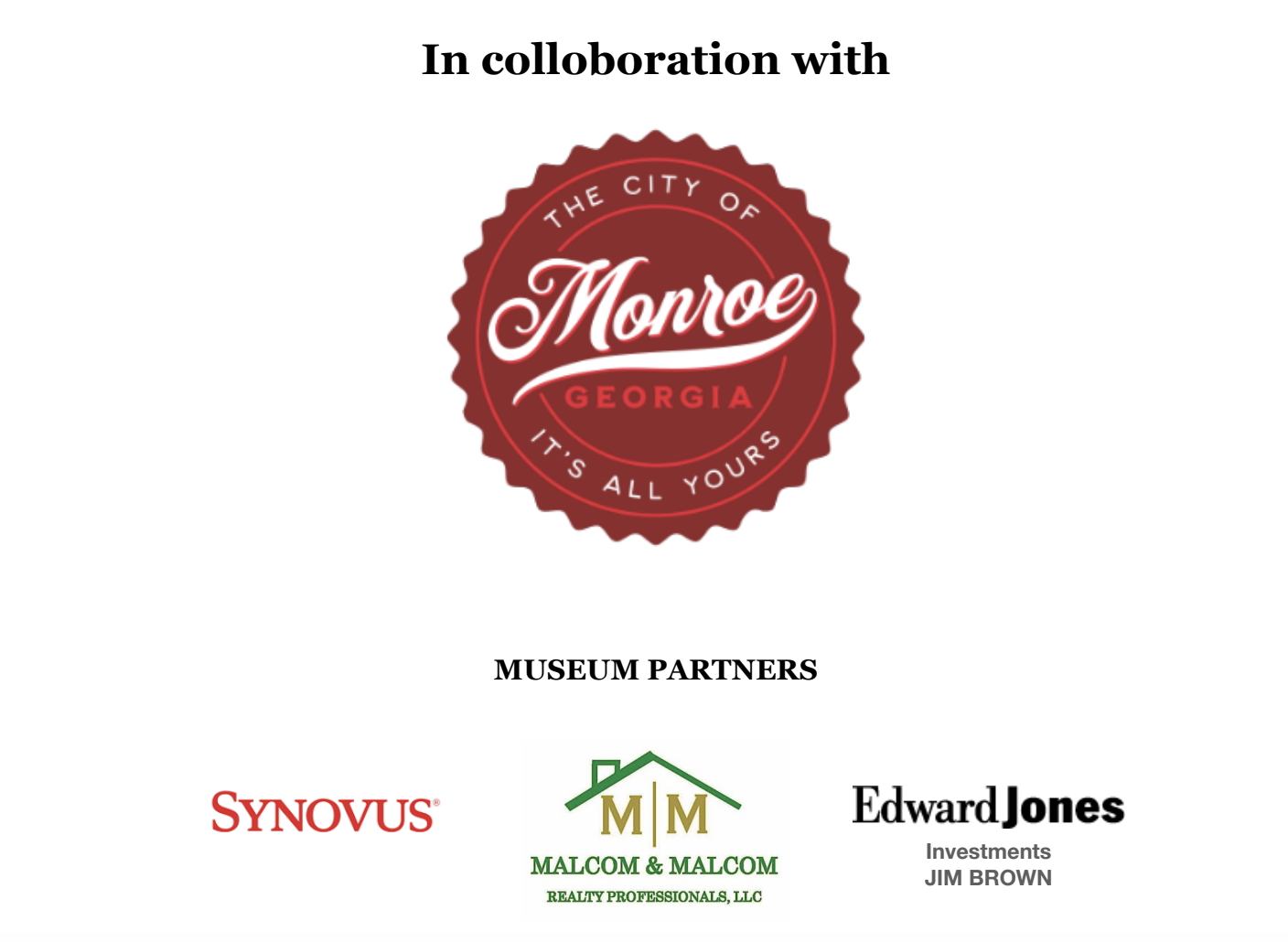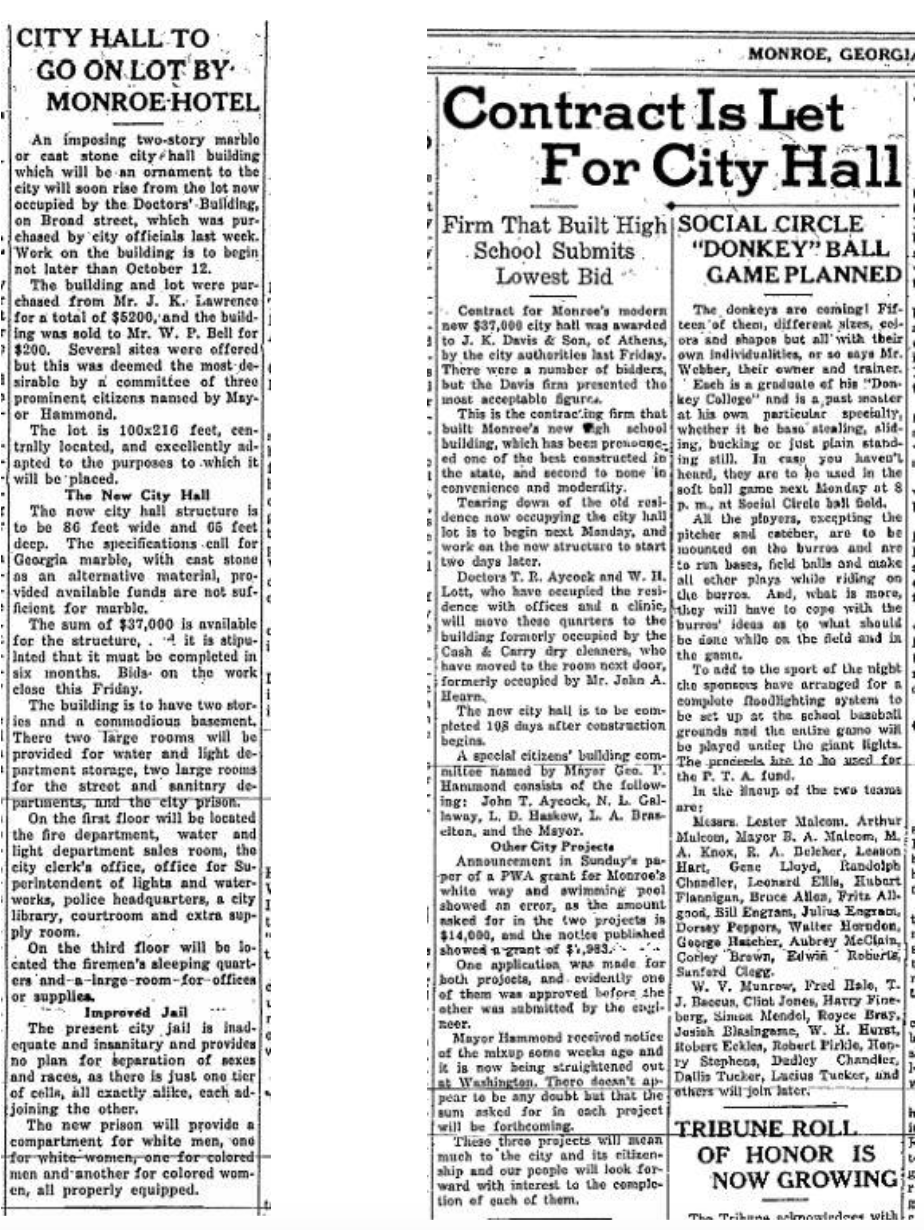Welcome to Monroe’s AROUND TOWN GALLERY! A history walk showcasing the the downtown area.
The Historic 1939 City Hall / Monroe Museum: A Legacy of Civic Progress and Community Heritage
A New Deal Vision Realized: WPA and the Construction of City Hall
The Monroe City Hall was constructed as part of the Works Progress Administration (WPA), a cornerstone of President Franklin D. Roosevelt’s New Deal. Established in 1935, the WPA was designed to combat the crippling unemployment of the Great Depression by funding public works projects nationwide. Through partnerships with state and local governments, the WPA provided jobs and built critical infrastructure, including schools, roads, parks, and government buildings—many of which remain in use today, like Monroe’s City Hall.
The Monroe City Hall project reflected the WPA’s dual mission: to provide immediate employment and to create lasting public assets. The building was designed by the architectural firm Daniel & Beutell in the Art Deco style, a rarity in Walton County, and constructed by John K. Davis & Son. Its distinctive composite blocks, made from marble dust, exemplified the era's resourcefulness and gave the structure a unique aesthetic character.
On November 14, 1938, Mr. John T. Aycock laid the first brick for Monroe’s new City Hall. This event marked the beginning of the construction at the corner of South Broad and Church Street—a project emblematic of the era’s New Deal optimism. The building, completed in 1939, stands today as a testament to the city’s civic development and a living museum chronicling Monroe’s rich history.
Civic Functions and Evolving Uses
When the new City Hall opened its doors, it quickly became the heart of Monroe’s municipal operations. The Fire Department was housed on the north side, while city offices occupied the south. Over the years, the building adapted to the community’s changing needs, at times accommodating the public library on its south side. These modifications reflected the building’s flexibility and the city’s steady growth.
By the turn of the 21st century, however, Monroe’s expanding population and evolving administrative requirements rendered the historic City Hall inadequate for modern governance. After a series of temporary relocations, the city government moved to a new facility at North Broad and Highland Avenue, a building that had previously served as the Monroe Utilities Network (MUN).
From City Hall to Museum: Preserving Monroe’s Heritage
Rather than abandon or demolish the 1939 City Hall, Monroe chose to honor its legacy by repurposing it as a center for community memory. In 2015, local volunteers and civic leaders established the Monroe Museum within the historic building. The museum offers a comprehensive timeline of Monroe’s history, beginning with the Native American presence in the region and extending to the present day. This transformation ensured that the building would remain a vibrant part of Monroe’s cultural landscape, serving as both a welcome center and a repository of local heritage.
Architectural and Historical Significance
The 1939 City Hall is not only significant for its role in local governance but also for its architectural and historical value. It was listed on the National Register of Historic Places in 1983, recognized as an outstanding example of Art Deco design in Georgia, and a symbol of the New Deal’s enduring impact on American communities. The use of marble dust composite blocks is a testament to the ingenuity and resourcefulness of the WPA era, while the building’s continued use highlights the adaptability of such public works projects.
Monroe’s Civic Evolution: A Continuum of Community Spaces
The site of city administration in Monroe has shifted several times over the decades, each move reflecting the city’s growth and changing needs. Before the 1939 WPA building, city hall was housed in a 1906 structure at the northeast corner of Wayne and Spring Streets—a building that still stands today. Prior to that, municipal affairs were conducted in a modest two-story building on Wayne Street. This continuum of civic spaces illustrates Monroe’s enduring commitment to effective local governance and community development.
Conclusion
The Historic 1939 City Hall, now home to the Monroe Museum and the Monroe Welcome Center, is a powerful reminder of the synergy between federal initiative and local aspiration. Born of the WPA’s efforts to lift the nation out of economic despair, the building has served Monroe for generations as a center of government, a hub of public services, and now as a guardian of the community’s collective memory. Its story is one of resilience, adaptation, and the enduring value of public investment in the fabric of American towns.










